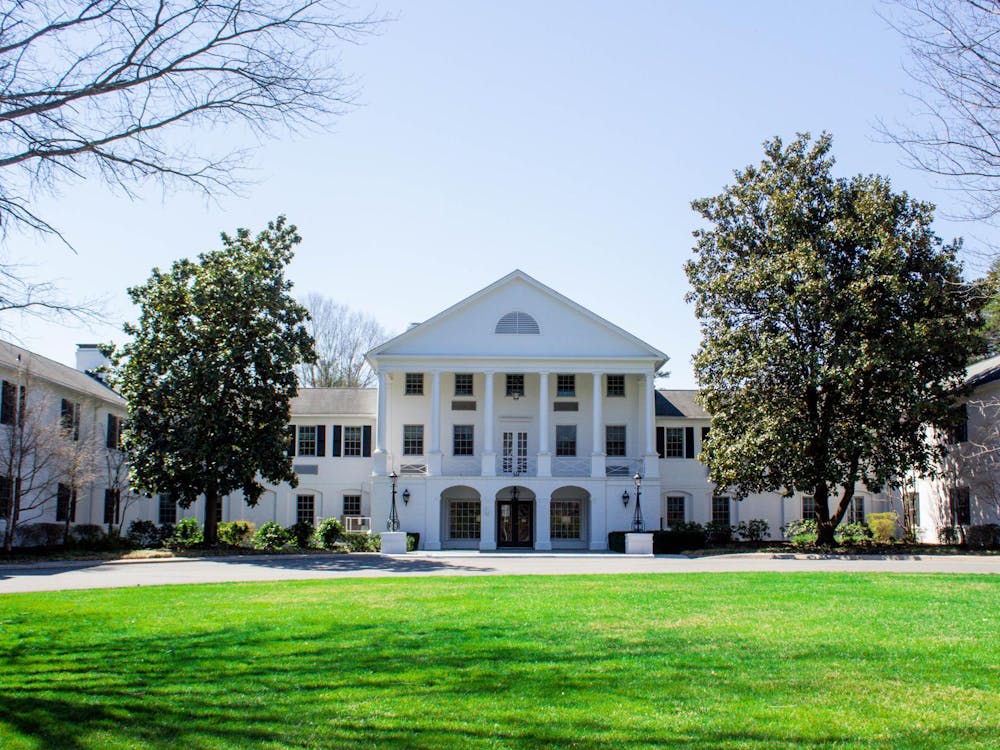University students are annoyed and angered by the construction of a seven-foot fence along the railroad tracks between 14th Street and Rugby Road. Some see this reaction as unjustified, such as Jim Tolbert, Charlottesville’s director of neighborhood development services, who commented: “It’s humorous to me that so many people are getting so upset over a safety project.” This perspective represents an inaccurate understanding of the extent to which blocking the cut-through behind the Corner affects students’ daily lives, both logistically and psychologically. Unfortunately, this flawed perspective led to insufficient communication on the part of the City of Charlottesville and the University about the project, further irritating and insulting the students whom it affects.
Many students will now face a longer commute to class, earlier wake-up times and more restricted travel in their daily lives. While their new reality may seem not that problematic — the students in the 14th and 15th street apartment complexes most directly affected still live quite close to Grounds — it is aggravating because it is inconsistent with their expectations. The many students living in these apartment complexes (such as the Pointe, the Greenhouse, the V, and Grandmarc, the last of which singlehandedly houses over 640 residents) signed leases early last fall with the intention of enjoying a shorter walk to class. The irritating alternative they now face is due to the lack of communication with students on the part of Charlottesville and the University about the project. News of the impending construction was first released in a June 17, 2014 news article and a notice beside the tracks directing people to visit the city of Charlottesville’s website for more information. For a project that was commissioned in 2010, this is unacceptable.
I believe student dismay about the project was not only because crossing the tracks is the logical choice, but also because crossing the tracks had become emotionally desirable. In an NBC29 news video about the construction, a Corner parking lot attendant mocked the way that students treat the route as “a rite of passage.” Yet student emotional ties to the route are understandable due to existence bias. In this context, the longstanding use of the route causes students to view it as preferable and “the way things ought to be.” Longevity also causes people to consider places aesthetically pleasing, as any student enjoying the crush of the gravel on the steep slope of the tracks can understand. Furthermore, students who frequently use the path experience mere exposure effect: in which repeat exposure causes them to like the route. Therefore, the legal route — walking down 14th Street to University Avenue and then up along the Corner retail stretch — seems inferior both in the minutes wasted and in these less discernable, psychological ways. The emotional tie explains why the unanticipated fence construction feels like a personal violation to many students. If Charlottesville or the University had shown students respect through open communication about the fencing project, it would have felt less offensive.
In an email interview, Tolbert said such communication would be unnecessary: “Since the fence is only stopping an illegal activity we also did not see a need to do further publicity.” I believe this justification is inadequate. Though illegal, crossing the train tracks became widely accepted practice. Charlottesville has been well-aware of this phenomenon as well: a 2008 article about recent ticketing sprees claimed that students remain “relentless” in crossing the tracks. Installing the fence is an extremely relevant matter for the students who reside off-Grounds, and Charlottesville communication about the matter would have demonstrated that the city respects its student residents as members of its community.
Tolbert suggested that the University could have initiated communication, claiming, “We assumed that the University would communicate with the students if that was necessary.” I consider this a valid assumption. University leaders regularly email students about matters that may affect their lives, such as University accreditation, a potential Ebola case and safety tips for the Foxfields Races. As a partner in the fence construction, the University should have anticipated student interest in the project. While this would require that the University acknowledge many of its students illegally trespass daily, the University could have discussed the issue in the same framework that it uses to discuss underage alcohol consumption: although it does not condone the behavior, it will acknowledge the behavior’s prevalence so as to foster discussion on how to keep its students safe.
Elaine Harrington is an Opinion Columnist for The Cavalier Daily. She can be reached at e.harrington@cavalierdaily.com.






